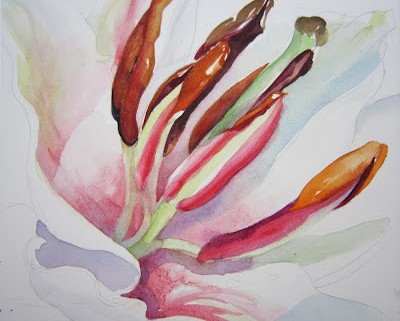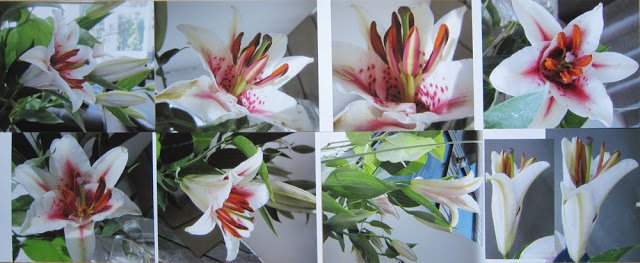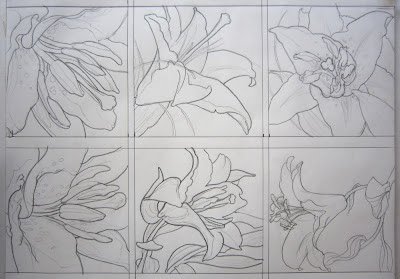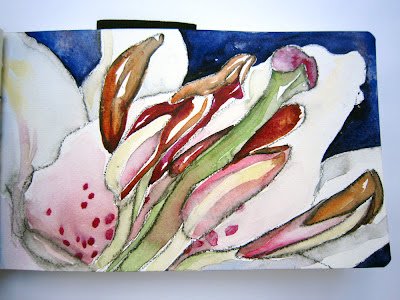August Botanical Workshop
I’m delighted to say the 3-day botanical workshop at Oregon Society of Artists went very well. Here’s a painting in progress, 10 x 10 inches, started during the workshop.
Preparing for a workshop gives me an opportunity to try things I’ve been wanting to try! This time it meant acquiring a bunch of lilies to photograph and paint. Here are some of the reference images we worked from. We also had the actual flowers to move around or photograph, and we discussed how to make a good art reference photo.
Below, a group of thumbnail sketches, or small, rough contour drawings… they’re about 6 inches across. Sketching thumbnails is a good warm-up exercise and also a useful way to think through the design process.
After choosing an image, a color study becomes my road map for a successful painting. I did a quick small version in my Pentalic Journal, below.
I’m using a variety of papers, to compare them —
Strathmore board for wet media
Crescent 5115 Hot press watercolor board
Arches watercolor board
Canson watercolor board
Right away I noticed the Strathmore (in this quick study, above) is different from the other surfaces in that it is fairly absorbent, causing the paint to soak in quickly, leaving observable edges. Notice edges in the dark background.
One good thing about the Strathmore is that both front and back surfaces are sized to paint on, whereas other boards have only one usable surface. While not my favorite, I find the surface is suitable for loose, fairly wet work. Above, I’ve used it to make a quick value study of a magnolia blossom. Since I know the surface is extra absorbent, I used enough water in the background wash to compensate.
The Crescent, Arches and Canson are all very workable for me. I still love the Crescent board best, overall. It has long been my favorite surface for workability.
But sometimes a surface with more texture is fun to play around with. I do like using Arches paper on wood cradled panels.
I notice the Canson makes the whitest surface… it’s acid free but not 100% rag (cotton). It’s also the least expensive, and works just fine.











Thank you Rene that is so helpful for me as I do not do a lot of watercolor.
One question: Can I use watercolor on a 7 oz 100% Cotton Duck stretched 6×6 Canvas?
Canvas isn't usually thought to be a suitable surface for watercolor, but since I've never tried it, I can't say it won't work. Give it a try, and let us know!
If the canvas is too absorbent, you might use a ground that is kind of like gesso intended for watercolor — Golden makes Absorbent Ground, Daniel Smith makes Watercolor Ground and they are both suitable.